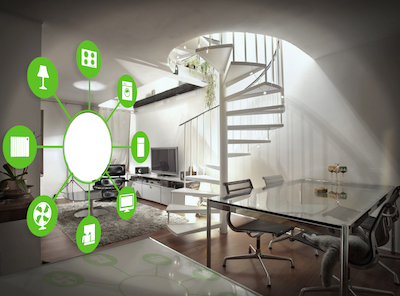
Smart Home Trends for 2019
Each year, more Australian home owners are taking advantage of smart home technology.
Smart speakers like Google’s Assistant, Amazon’s Alexa and Apple’s HomePod have introduced us to a world of potential in connectivity and automation.
Despite ongoing concerns around privacy and cyber security, the benefits of smart tech – increased energy efficiency, more time for family, greater home security, and even healthcare and management – are generating increased demand.
In May 2018, leading emerging technology analyst firm, Teslyte, released its annual Internet of Things (IoT) @ Home Market Report, which revealed that the average number of connected devices in Australian households rose from 13.7 in 2017 to 17.1 and will continue to grow.
As demand increases, more people will expect their new homes to support and include smart home technology, and the housing industry will need to keep up.
In 2019, the big trends that we’re seeing relate to network, lifestyle, and security.
Launch of the 5G network
To support the Internet of Things (also known as IoT - the range of devices and appliances that can be connected to the internet and each other), we need a network that can handle more connections in less time.
The 5G mobile network promises faster network speeds, lower latency (the time between the signal leaving your device going to the internet and coming back again), and the ability to handle more connections at once.
Telstra launched its first 5G customer connection in December last year, and expects to provide the service to consumers more widely in the first of 2019 as more 5G-enabled tech appears in the market.
Smart lifestyle devices
Teslyte’s 2018 research suggests that “whitegoods, appliances and house and garden products will be the largest sector by 2022”.
From an air conditioner that can learn and adjust its settings based on your preferences, to a kitchen splashback that reads barcodes, suggests recipes, and can control your oven and stovetop, more appliances will come with inbuilt computers that talk to other devices in the home.
The elderly and people with disabilities will benefit from technology that offers them greater independence and health monitoring, and parents will have access to all manner of smart baby tech and ways to keep an eye on their kids. And who wouldn’t love a robot lawnmower?
Designing smart homes right from the building stage in the future will mean seamless operation and efficiency, while older homes will be retrofitted.
Smart Security
Expect more smart doorbells with discreet, higher resolution video cameras to emerge this year. Video cameras generally will have more streamlined and subtle design and produce higher quality images, and security systems may start to include things like drone security guards.
And then there’s the smart lock.
Smart locks already exist but they’ll get smarter. Not only will you be able to lock and unlock your home, but you will be able to monitor who comes and goes, assign identities and individual settings - including access privileges, and use voice commands as well as a smartphone app.
It won’t be long before people expect these things to be standard in a new home or offered as part of major renovations.
A big year for the housing industry
We’ve come a long way with smart home technology since the 1990s gave us a light we could turn on by clapping our hands.
It was called The Clapper. And it seemed pretty smart at the time.
These days, smart technology and internet connectivity allow us to operate a range of devices in the home to automate all manner of functions, saving people time, money, and improving their quality of life.
For us at Premier AV Installs, helping people live better with smart technology solutions is what we’re here for.
If you want to know more, or just need some advice on smart tech for your home or business, give Brendan, Leaha and the team a call on (07) 4927 4037 or email
